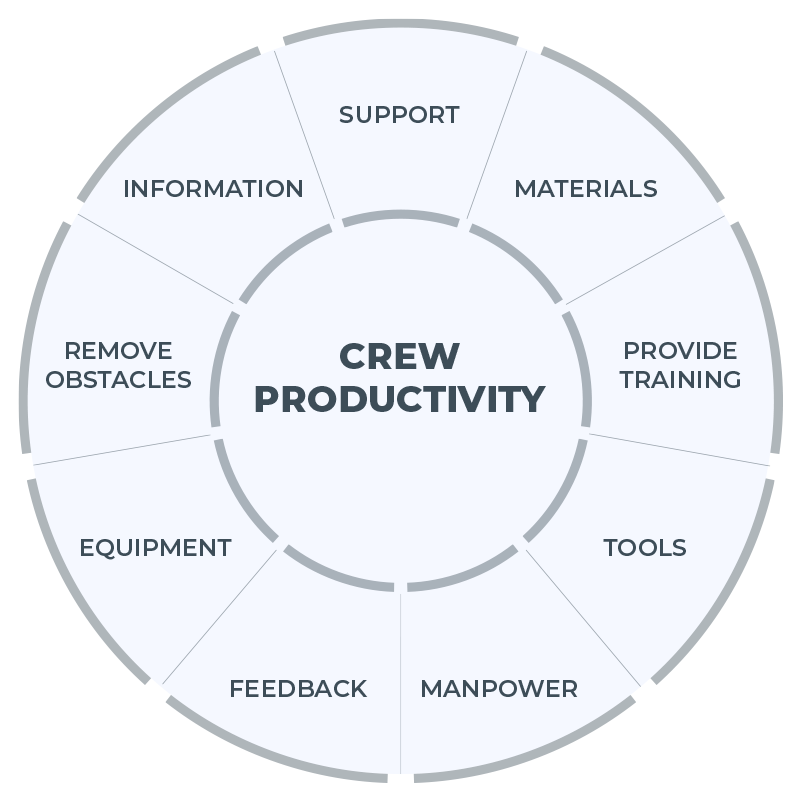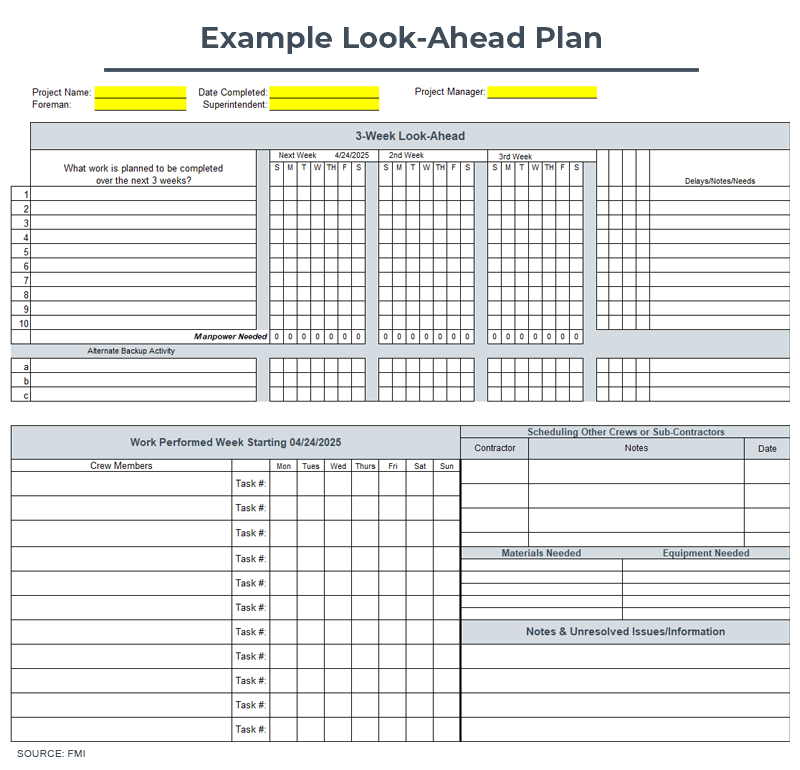Stopping Supply Chain Risks from Impacting the Field

In the previous four quick read posts, we’ve focused on upstream organizational and risk planning:
- Educating your customers on the risk of supply chain disruptions
- Tightening your project selection criteria and estimate reviews process
- Aligning contract clauses with owners to share risk of supply chain disruption
- Planning your projects to mitigate supply chain risk
Nearly all these activities start in the office and with your executives and project team leaders. However, the biggest impacts of supply chain disruption will be felt in the field. And the field is where best-in-class contractors play and win.
Although contractors are likely to experience increased material risks near term, we cannot ignore or forget about the number one risk in construction, LABOR. Mismanaged material risk and labor risk can have a compounding, disastrous effect on project performance. Conversely, optimized field labor productivity can help contractors achieve profit gains and perhaps offset any material risk impacts they are unable to mitigate.
Over the last two decades, FMI has conducted numerous time studies of active construction projects. Time spent by field labor can be separated into three categories:
Primary time
- Time spent installing in-scope work correctly and for the first time.
Secondary time
- Time spent planning, coordinating and organizing tasks, material or labor – all of which are required in order to be productive and maximize our primary time.
Recoverable lost time
- Time that is neither primary nor secondary time (e.g., rework; waiting for materials, tools information or access to the work; looking for material; unplanned delays; proceeding with less productive unplanned work)
FMI has found that approximately 32% of all time on an active construction site is recoverable lost time.
- When a delivery date is missed, your field leaders are unable to work on critical path activities or install in-scope work as planned.
- When a delivery date is pushed, your field leaders scramble to find less productive and less-planned fill-in work that is likely not on the critical path.
- When a delivery date is unpredictable, it hampers the ability of your field leaders to plan and organize their tasks, material and labor.
All these lead to recoverable lost time. In times of heightened supply chain disruption, this recoverable lost time is more likely to exceed the average 32% on your projects.
Unpredictability of workflows and excess recoverable lost time also have an impact on overall field morale. Field crews want to go to work every day to be on a winning team rather than a losing one. You can feel it on a job site when the work isn’t going well. Organizations that support the field, create predictability of workflows and engage field teams in planning are likely to retain skilled field talent.
What does the field need to work productively and minimize recoverable lost time?

Contractors can create predictability and a sense of assurance among field leaders through execution of a look-ahead or short interval planning process. This is the process that ensures field teams receive all the things they need to work productively and minimize recoverable lost time.
Once a week field leaders should be asked to put together their plans for the next two or three weeks, including:
- Expected production
- Tasks planned and approximate durations
- Manpower needed to deliver on the plan
- Resources needed (labor, materials, equipment, subcontractors)
- Location(s) of planned work
- Expected challenges
- Work area access
- Trade stacking
- Weather
- Information needed or other unresolved issues
- Unknown delivery dates
- Outstanding RFIs
- Unresolved change orders
- Other information needed to be successful in executing the plan
- Alternate or plan B work
Each field leader’s plan then gets sent to the office, typically to both superintendents and project managers, and the entire project team responds to the field leader’s plan by getting them what they need. FMI often refers to look-ahead plans as the foreman’s shopping list. It is the responsibility of the organization to then go shopping and deliver what’s requested.
A typical look-ahead plan, often one page front-and-back, is depicted below.

During times of heightened uncertainty, like those caused by supply chain disruption, it is even more important that the project team is communicating effectively with the field and ensuring they get information. Field leaders should be updated weekly with planned delivery dates of material and equipment.
Ensuring field leaders have the information and support necessary to plan their work, spend more labor hours in primary time and execute productively will help your company create winning teams and winning projects.
What Contractors Should Do: Playing Offense Instead of Defense
- Double-down on your company’s look-ahead planning process making sure:
- Every field leader is preparing their look-ahead plan weekly.
- Any delivery date changes or associated scope changes are communicated to field teams weekly, even for deliveries many weeks in the future.
- There is good dialogue between the field and office responding to field leaders’ requests.
- Measure how consistently your teams are completing look-ahead plans and whether superintendents and project managers are responding each week to the plans they receive.
- Does every field leader submit a plan each week?
- Is every look-ahead plan being acknowledged by your superintendents and project managers?
- Solicit feedback from your field leaders on how they are being supported.
- Are they getting the information, materials, tools, equipment and manpower to productively execute their plan?
- If not, why not? What’s missing?
- Conduct site walks of your projects, looking for how much effort is being spent in primary time, secondary time or recoverable lost time.
- Huddle with your field leaders to let them know that your company has weathered supply chain disruptions before and you know how to do it again. You understand that the most important thing you can do is to drive information and support the field.
If you would like to discuss specifics about your own supply chain challenges related to tariffs, delays or other disruptions, please don’t hesitate to reach out to me or another member of our team.



